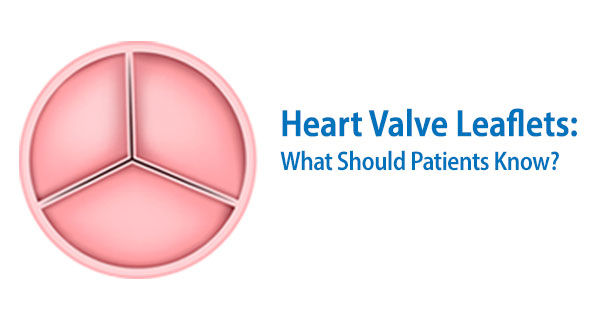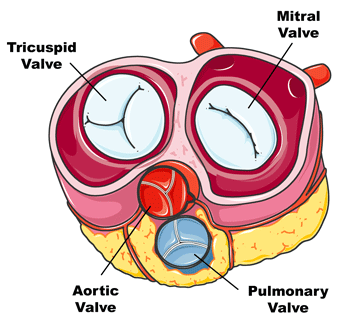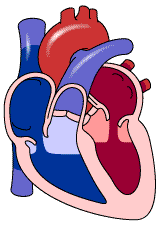Heart Valve Leaflets: 7 Facts to Know
Written By: Adam Pick, Patient Advocate, Author & Website Founder
Page Last Updated: June 6, 2025
When diagnosed with a heart valve disorder, patients often hear the term "leaflets" as the cardiologist describes what is wrong with their aortic, mitral, tricuspid or pulmonary valves.
As a result, patients often have questions including:
- What are heart valve leaflets?
- How do heart valve leaflets work?
- What is wrong with my leaflets?
- Can surgery fix my defective heart valve leaflets?

To answer these questions and more, I posted this page to help educate patients about their heart valve leafets. More specifically, here are 7 important facts to know about your heart valve leaflets!
1. Your Heart Valve Leaflets Fulfill A Vital Role
As described by the Cleveland Clinic, your heart has four valves – one for each chamber of the heart. The mitral valve and tricuspid valve are located between the upper heart chambers (atria) and the lower heart chambers (ventricles). The aortic and pulmonic valves are located between the ventricles and the major blood vessels leaving your heart (see the image above).

According to the University of Rochester Medical Center, normal tricuspid, pulmonary and aortic valves have three leaflets (also known as “flaps”), however, the mitral valve is an exception: it only has two leaflets.
Your heart valve leaflets act as one-way inlets. The leaflets open to let blood move forward through the heart during the first half of your heartbeat, and they close to prevent blood from flowing backward during the other half of your heartbeat.
According to the Mayo Clinic, heart valve leaflets keep blood flowing in the correct direction by fitting together to create a tight seal. This tight seal ensures that blood flows through the heart in one direction, with no backflow.
2. The Blood Pumping Process Is Intricate... And Repeated
As described by the Cleveland Clinic, the step-by-step process of how your blood flows through the heart is as follows:
- A. Open tricuspid and mitral valves. Blood flows from the right atrium into the right ventricle through the open tricuspid valve, and from the left atrium into the left ventricle through the open mitral valve.
- B. Closed tricuspid and mitral valves. When the right ventricle is full, the tricuspid valve closes and keeps blood from flowing backward into the right atrium. When the left ventricle fills, the mitral valve leaflets close to keep blood from flowing backward into the left atrium.
- C. Open pulmonic and aortic valve. As the right ventricle contracts, the pulmonic valve opens. Blood is pumped out into the pulmonary artery to the lungs. As the left ventricle contracts, the aortic valve opens. Blood is pumped through the aortic valve into the aorta, which branches into arteries that supply blood to your entire body.
- D. Closed pulmonic and aortic valves. When the right ventricle finishes contracting and relaxes, the pulmonic valve shuts. This keeps blood from flowing back into the right ventricle. When the left ventricle finishes contracting, the aortic valve shuts, which keeps blood from flowing back into the left ventricle.

The Cleveland Clinic notes that this pattern repeats as blood flows continuously. As you can tell, the heart valve leaflets have a crucial role in ensuring efficient blood flow from your heart to your lungs and body.
3. If Your Leaflets Don’t Form A Tight Seal, It Can Be A Problem
So what happens if your heart valve leaflets don’t fit together? If your leaflets don’t form a tight seal upon closure, it is called a prolapse, and is a common heart condition. Mitral valve prolapse (MVP), for example, is one of the most common forms of heart valve disease. In fact, according to the American Heart Association, approximately 2% of the population has some form of this mitral valve disorder.
According to Columbia University Surgery, prolapse happens when the leaflets and the cords supporting the heart valves weaken. The result is that – with each heartbeat – the heart valve leaflets bulge, or prolapse, backward. This can lead to several, more serious problems.
4. Faulty Heart Valve Leaflets Can Become A Serious Issue If Left Untreated
Can heart valve leaflet disorders be dangerous? According to the Mayo Clinic, heart valve prolapse can lead to three potentially serious conditions for your heart valve leaflets:
Heart valve regurgitation (leaky valve). According to the University of Rochester Medical Center, regurgitation (or a leaky valve) can occur, which means the valve doesn’t fully close and the blood flows backward. In the mitral and tricuspid valves, this means blood leaks back into the atria. In the case of the aortic and pulmonary valves, blood leaks back into the ventricles. This can cause the chambers to be overworked because they have repump the extra blood that was returned. According to the Mayo Clinic, if not treated, it can result in heart muscle damage. If severe regurgitation does occur, symptoms typically appear. The American Heart Association notes that common symptoms include bursts of rapid heartbeat (palpitations), chest discomfort and fatigue.
Heart valve stenosis (narrowed valve). The University of Rochester Medical Center describes stenosis as a narrowing of your valve opening. This makes it harder for the heart to pump blood across the narrowed valve. Calcium can build up on the heart valve leaflets causing them to become thick or stiff, resulting in even further reduced blood flow.
Heart valve infection (endocarditis). The American Heart Association also notes that heart valves and leaflets can get infected. If bacteria begin to grow on heart valves that are already diseased, it is difficult to fight the infection, and bacterial endocarditis can occur.
5. Treatment Options Depend On The Severity of Your Condition
Treatment for heart valve disease depends on the severity of your condition and whether it’s becoming worse.
According to the Mayo Clinic, mitral valve disease, for example, can cause other complications, including:
- Irregular heart rhythms in the upper heart chambers (atrial fibrillation or A-Fib)
- High blood pressure that affects the blood vessels in the lungs (pulmonary hypertension)
- Blood clots
- Heart failure
- Stroke
According to the Mayo Clinic, in the case of severe tricuspid valve disease, it may only worsen and require medical or surgical intervention in adulthood. If you suffer from a severe heart valve disorder, it may need to be treated with heart valve repair or heart valve replacement operation.
6. Heart Valves May Have To Be Repaired Or Replaced
According to the Mayo Clinic, heart valve repair or heart valve replacement can treat heart valve disease and help restore normal blood flow, reduce symptoms, improve survival and help preserve the function of your heart muscle.
The Mayo Clinic also notes that heart valve repair is usually the first choice because it's associated with a lower risk of infection, preserves and optimizes heart function, and may reduce the potential need for long-term use of blood-thinning medications.
Not all valves can be repaired, however, and some repaired valves may eventually require replacement. During mitral valve replacement, for example, this typically open-heart operation usually takes between three to five hours, during which the surgeon removes the diseased mitral valve and replaces it with a mechanical heart valve replacement or a tissue heart valve replacement.
According to the UCLA Medical Center, mechanical valve replacements can last decades and are typically used in younger patients. However, they require lifelong blood-thinning medications to prevent clots. Biological tissue heart valves made from cow (bovine) or pig (porcine) tissue, may last for 10 to 15 years before a new replacement valve is needed.
7. There Is Exciting Heart Valve Leaflet Technology On The Horizon
There are new transcatheter approaches for patients needing mitral valve repair. Transcatheter Mitral Valve Replacement (TMVR) devices are also in feasibility studies and clinical trials. These TMVR procedures do not require an incision to the patient's chest or sternum to be on the heart-lung machine and, in some cases not required to be on general anesthesia.
For example, the MitraClip – available for certain patient populations – is an FDA-approved transcatheter mitral valve repair device that “clips” the malfunctioning leaflets together in an effort to prevent mitral regurgitation.
Here is a video which illustrates how the MitraClip works:
For those patients needing a new aortic heart valve, many cardiac centers have used a new aortic heart valve known as the Inspiris Resilia aortic valve. Approved by the FDA in 2017 and developed by Edwards Lifesciences, the Inspiris Resilia aortic valve is designed to block the chemical reaction that causes calcification. It is designed to be more durable, reducing the need for an additional replacement later.
I hope these 7 facts about heart valve leaflets were helpful.
Keep on tickin!
Adam
You May Also Like...
Here's more educational information and patient success stories to educate and empower you:
- Mitral Valve Leaflets: 7 Important Facts To Know
- Mitral Valve Chordae: What Should Patient Know?
- Download 10+ Free Patient eBooks Here
References:
https://my.clevelandclinic.org/health/articles/17067-heart-valves
https://www.urmc.rochester.edu/encyclopedia/content.aspx?contenttypeid=90&contentid=P03059
https://www.heart.org/en/health-topics/heart-valve-problems-and-disease/heart-valve-problems-and-causes/understanding-heart-valve-problems-and-causes
https://www.mayoclinic.org/tests-procedures/tricuspid-valve-repair-tricuspid-valve-replacement/about/pac-20385087
https://www.heart.org/en/health-topics/heart-valve-problems-and-disease/heart-valve-problems-and-causes/heart-valves-and-infective-endocarditis
https://www.mayoclinic.org/diseases-conditions/mitral-valve-disease/symptoms-causes/syc-20355107
https://www.mayoclinic.org/diseases-conditions/mitral-valve-regurgitation/symptoms-causes/syc-20350178
http://columbiasurgery.org/heart/mitral-regurgitation
https://my.clevelandclinic.org/health/diseases/17241-mitral-valve-prolapse
https://www.heart.org/en/health-topics/heart-valve-problems-and-disease/heart-valve-problems-and-causes/problem-mitral-valve-prolapse
https://www.heart-valve-surgery.com/mitraclip/
https://www.edwards.com/devices/heart-valves/resilia
https://www.uclahealth.org/endurance-athlete-hopes-new-heart-valve-technology-will-keep-him-active





